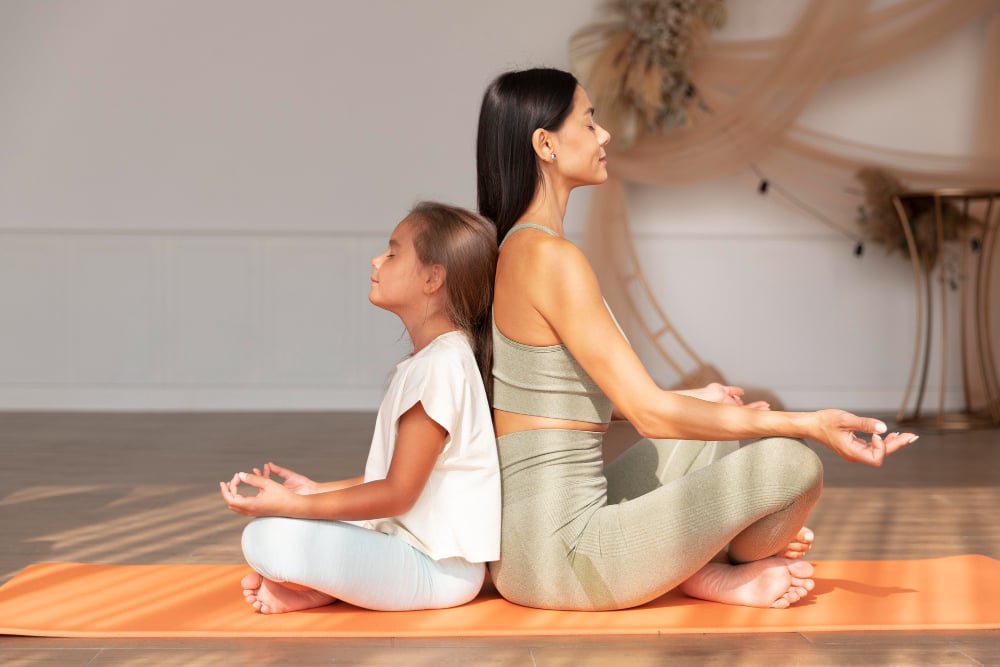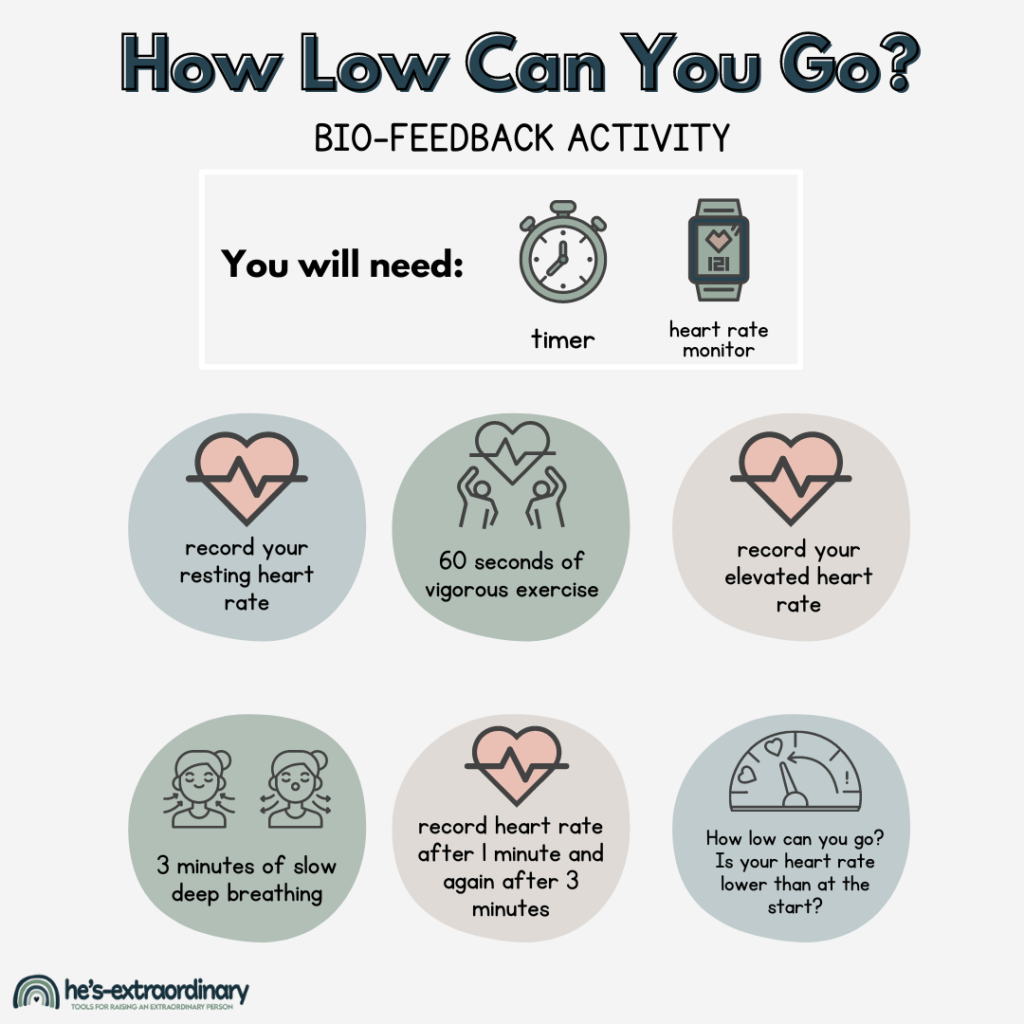10 Interoception and Body Awareness Games and Activities for Kids
What’s inside this article: The importance of interoception, signs that your child may struggle with interoceptive awareness and ten activities/printables/resources that promote the development of interoception.
Disclaimer: This post contains affiliate links.
The interoceptive system is one of the eight sensory systems in our bodies, and it’s definitely the least known and least understood.
However, more and more research about interoception is coming out, highlighting its role in self-awareness, emotional regulation, and daily functioning.
Many autistic children and those with ADHD or sensory processing differences experience unique interoceptive patterns that influence how they experience internal body sensations, including emotions and physical cues like hunger and thirst.
This article explores the importance of interoception, signs that a child may experience differences in interoceptive awareness, and various interoception games and activities that support body awareness.
It also includes printable resources and strategies to help children better understand and connect with their internal sensations.
Why is Interoception Important?
Interoception is how we recognize and interpret internal body signals. These signals help us understand how we feel physically and emotionally.
This includes:
- How we feel emotions
- Hunger
- Fullness
- Nausea
- The need to use the washroom
- Thirst
- And more
It’s those butterflies in our stomach when we are really nervous. And the growl in our bellies when we’re hungry. And the whoooosh in there when we’re on a rollercoaster.
Interoception plays a role in intuition, problem-solving, perspective-taking, social understanding, empathy, self-awareness, and emotional regulation.
If your child finds any of those skills challenging, then interoception games and activities may help them become more in tune with their own bodies.
Related Reading: How Does The Interoceptive System Work?
Recognizing Interoceptive Differences in Kids
Just like all of the other senses, everyone experiences interoception in their own way.
Some children naturally recognize their body signals, while others may need more support in identifying and interpreting these sensations.
If a child frequently experiences unexpected reactions to internal cues, they may benefit from activities that help them connect with their body’s signals.
Consider whether your child:
- Notices when they are becoming overwhelmed or dysregulated, like when they’re starting to feel angry or anxious
- Recognizes the need to use the restroom
- When injured, can accurately identify what hurts
- Identifies when they are hungry or thirsty
- Recognizes and names own emotions
- Knows when feeling unwell/ill
If any of these areas feel challenging for your child, interoception-based activities may provide valuable support in building awareness and connection with their internal experience.
Interoception Activities and Games for Kids
Interoceptive awareness can be developed through intentional activities that increase body awareness and help children focus on internal cues.
I’ve put together this list of interoception games and activities, which are designed to be engaging, supportive, and adaptable to different needs.
Improving interoceptive awareness may reduce meltdowns and challenging behaviors and improve self-regulation.
1. Use Exercise + BioFeedback as an “Experiment”
Biofeedback is a therapeutic technique that uses technology to monitor different body functions and provide visual information about how our bodies work.
It’s a great educational tool for children (and adults, too!) that brings more awareness to the body and how it changes during different arousal levels and emotional states.
This activity is called “How Low Can You Go?” – Get the full instructions here.
2. Hand Stretches for Muscle Awareness
Children struggling with interoception may not notice the difference between tense muscles and resting muscles.
Since muscle tension is a common sign of stress building it’s important to be able to recognize this cue and learn how to relax.
These simple hand stretches demonstrate and help children to recognize the different sensations when muscles are tense.
- Sit comfortably and gently rest your hands on your lap.
- Lift your hands up and stretch all your fingers open as far as they will go, holding the stretch for 30 seconds.
- Place your hands back on your lap.
- Get your child to show you where they could feel the tension in their hands while their fingers were stretched.
3. Find Your Pulse
Help your child find their own pulse with their hand and counter the number of pulses felt in 1 minute.
You can pair this interoception activity with your exercise experiment.
Get your child to write down their pulse immediately after exercise and again five minutes later.
This can help your child understand the connection between heart rate and arousal levels.

You can get detailed instructions on checking your pulse here.
4. Yoga
The benefits of yoga are seemingly endless.
As it turns out, yoga activities make great interoception activities for kids. This is because yoga has been proven to reduce stress, improve emotional well-being, and improve awareness.
Yoga is also great for sensory seekers, and you can find the best yoga poses for sensory seekers here.
I actually spoke to a yoga instructor once who told me it’s not uncommon for people to cry during their first yoga class because it’s such a great stress reliever.
You can try out these fun and easy yoga poses at any time. No prep required!
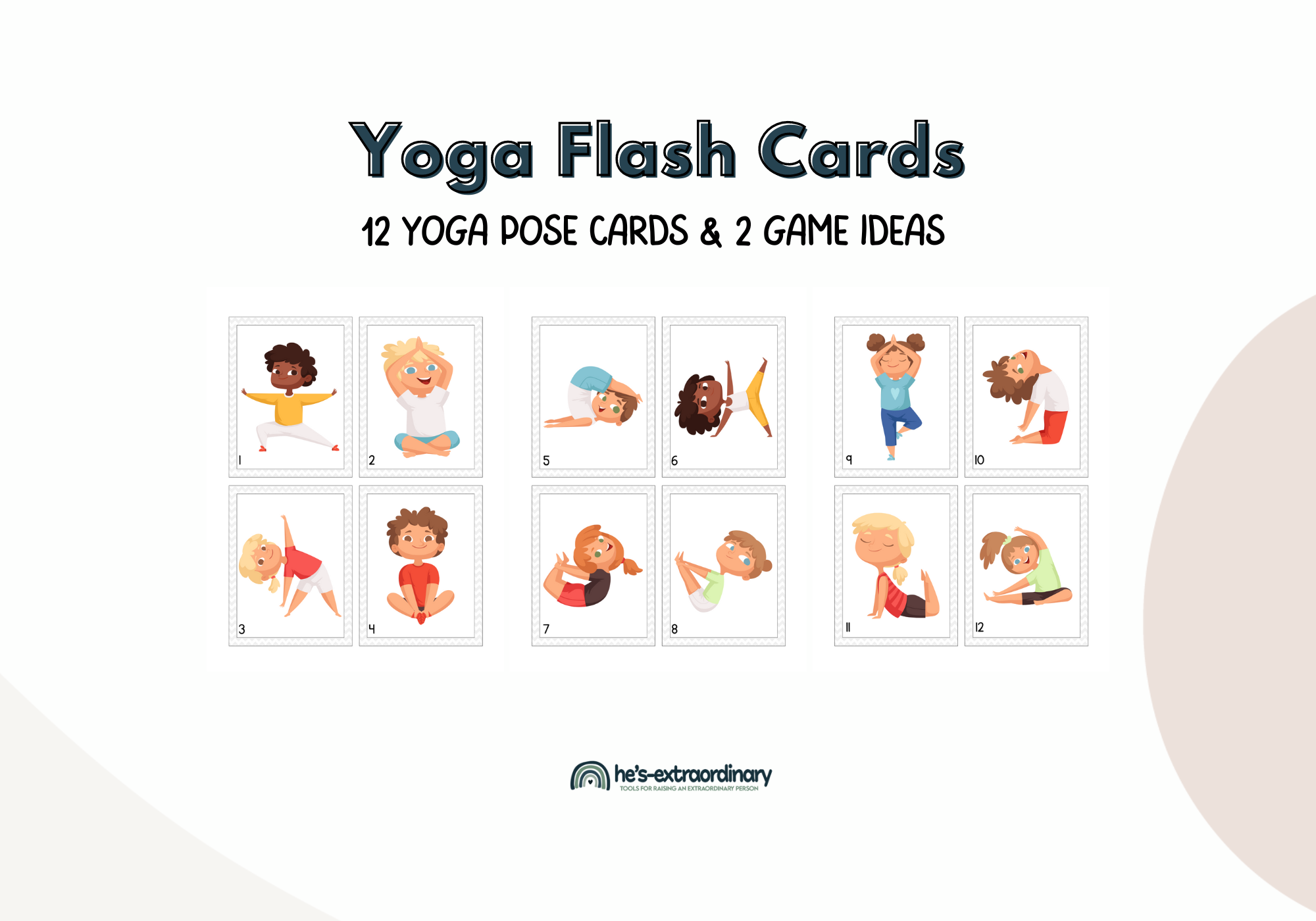
Yoga Flash Cards
Includes 12 printable yoga pose flashcards and two game ideas for playing with the cards.
5. Map Your Feelings
Mapping your feelings is all about identifying the different sensations happening in your body when you feel a certain way and marking them all on a “map” of your body.
The idea is that over time, your child will be able to use their feelings maps to identify what emotions they’re currently feeling as they begin to notice patterns.
For example, after doing this mapping activity, they may begin to notice that their face feels hot when they’re angry or that their hands shake when they’re scared.
There are two options when it comes to making your map.
Option one: Use a large roll of paper and get your child to lie down and trace their entire body. Then, you can start coloring, drawing, and labeling different sensations and what emotions they are linked to. We did this activity, you can see all the pictures here.
Option two: Print several copies of this body map sheet and use them to create a feelings map for each emotion and then save them all together in a folder.
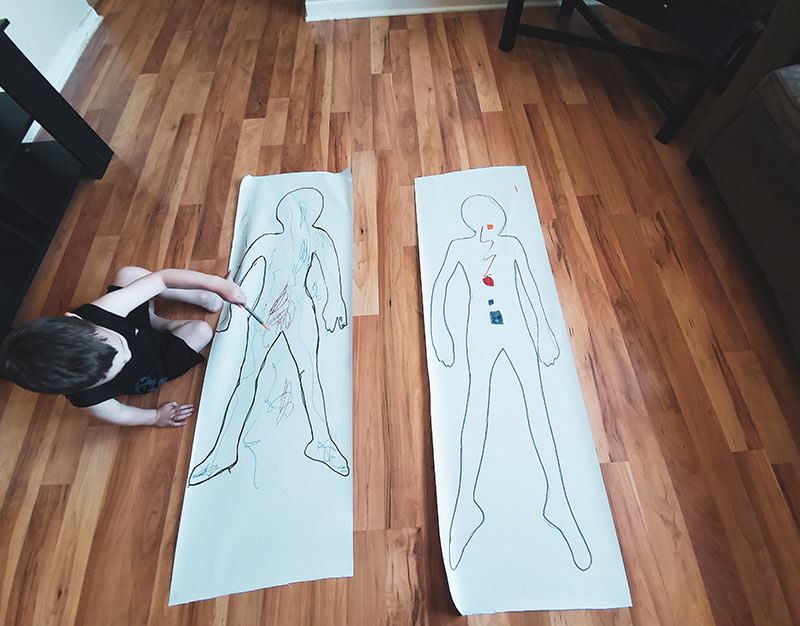
6. Mindfulness
Any activities that involve mindfulness make great interoception activities for kids because mindfulness is all about being in the present moment.
The main focus when practicing mindfulness is to bring attention to your breathing, your heart rate, and how your body feels. It’s all about acknowledging and accepting all the sensory experiences presently happening to your body.
My all-time favorite mindfulness activities are from this set of 55 activity cards. These cards are all beautifully illustrated and come with easy-to-follow instructions for parents and kids to play together.
It can take some time to get your child interested in mindfulness because to kids, it seems “boring,” or as my son says, “I don’t want to just sit and do nothing.”
So don’t force them; just encourage a few minutes at a time. Model using mindfulness yourself.
You will hopefully be able to build up their participation over time.
Related: Mindfulness Activities for ADHD
7. Head-to-Toe Muscle Relaxation
Progressive muscle relaxation is actually an activity I learned when I was in therapy and is a common one taught in mindfulness groups.
It’s easy to learn and quick to do.
Do this with your kids as a little check-in on their bodies and to help draw attention to tense muscles vs. relaxed muscles.
- Sit comfortably with your hands on your lap and your feet on the floor.
- Starting with your feet, tight squeeze all of your muscles, hold for a moment and then release.
- From your feet, move up to squeezing your calves, then your thighs, hips, and abdomen.
- Do these muscle squeezes one at a time, moving all the way to your head
You should sit facing your child and give verbal instructions while participating in this activity with them.
You can download a free progressive muscle relaxation script here.
8. How Hungry Am I?
This activity helps children recognize early hunger and fullness cues.
Children who struggle with interoception may struggle with determining if they feel hungry or knowing when they feel full. This may cause children to overeat or to not eat enough.
Using this “How Hungry Am I?” activity helps kids think about the ways their bodies give them signals telling them when they need to eat. The more kids practice with this activity, the more attuned they will become to their body’s signals.
- Begin by discussing how the body signals hunger, such as a growling stomach, low energy, irritability, or feeling lightheaded.
- Explain that fullness signals take longer to register, so eating slowly allows the body time to adjust.
- Introduce a hunger scale:
- 😐 = Pretty hungry, my stomach feels empty
- 🙂 = Just right! Not too hungry or too full; satisfied
- 🙁 = Too full, I ate too much
- Have your child make a fist and explain that their stomach is about the same size. Discuss how different amounts of food affect how their stomach feels.
- Before eating, ask your child to rate their hunger using the scale and record it.
- Eat a snack mindfully, chewing slowly, and noticing flavors and sensations.
- After eating, check in again and record any changes in hunger levels.
- Encourage your child to track their hunger over several days to notice patterns in how their body signals its needs.
See the full activity instructions here.
9. Breathing Exercises for Self-Regulation
Breathing exercises help children gain control of their bodies, teaching them awareness and healthy calm-down strategies.
When you’re upset or angry, your breathing speeds up. Deep breathing exercises help return your breathing to normal, calming you down at the same time.
10. When I Feel… Emotional Awareness Activity
If your child has trouble identifying their early anger cues or seems to get angry quickly, this “When I Get Angry” activity may help them be more aware of what happens to their bodies when they are angry.
Go through the different blocks on the activity sheet with your child, and if the statement is true for them when they’re angry, color the block red.
The statements are things like “my face gets hot”, “I cry”, or “my heart beats really fast”.
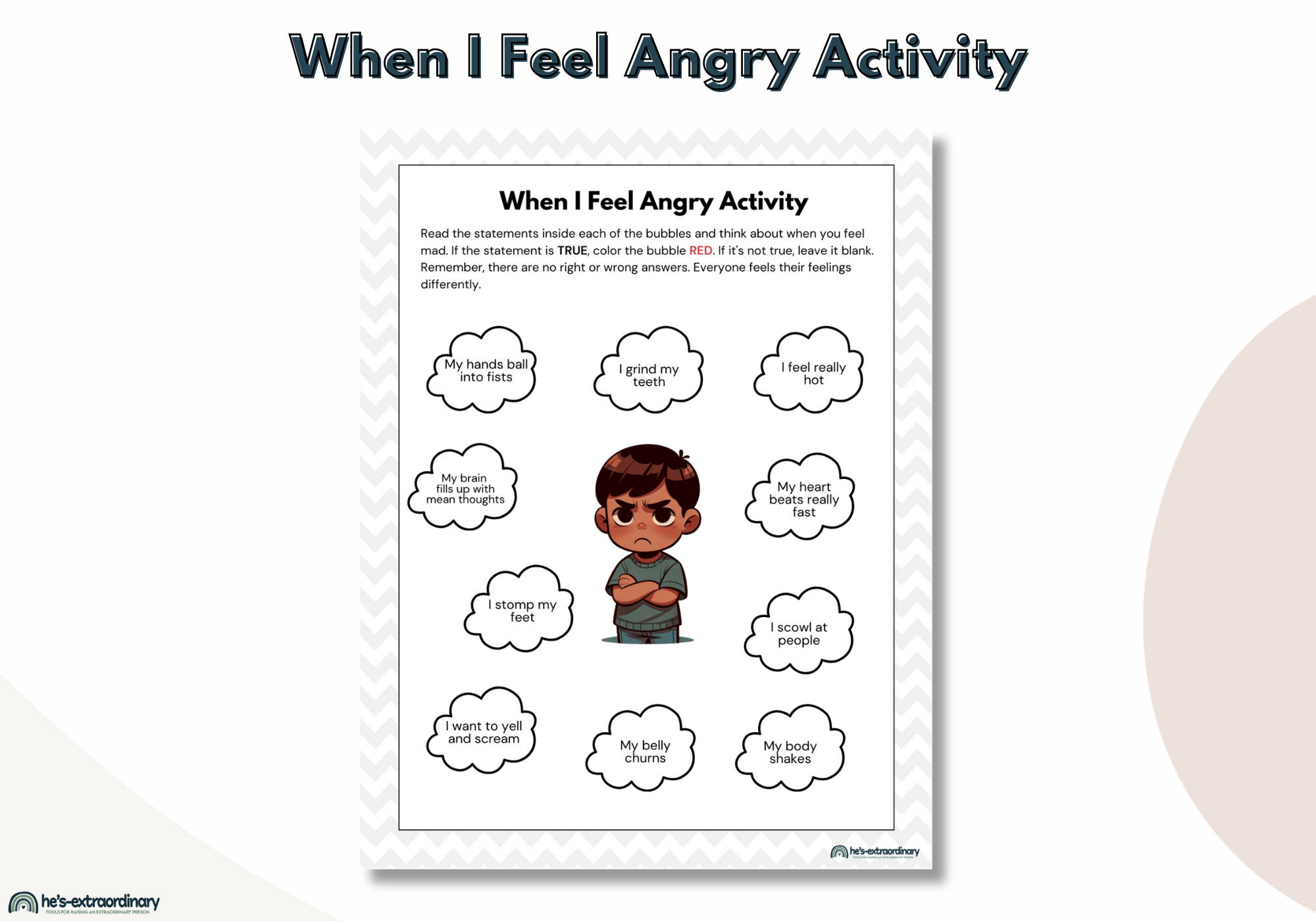
When I Feel Angry
Help your child learn to recognize the physiological effects of anger. Go through each of the anger cues on the free printable with your child, and if they feel that the statement is true for them when they’re angry, color it red..
You can also find this same activity but for exploring sadness. Download “When I Feel Sad..” here.
11. Interoception Simon Says
A fun twist on Simon Says: This game encourages kids to notice and respond to their body’s sensations.
- Call out interoception-related commands like:
- “Simon says, rub your belly if you feel hungry!”
- “Simon says, take three deep breaths and notice your heartbeat!”
- “Simon says, stretch your arms and feel if your muscles are tight or relaxed.”
- Occasionally, leave out “Simon says” to keep it engaging.
- Encourage kids to describe how their body feels after each action.
12. Heartbeat Hide-and-Seek
This game helps children tune into their heart rate and how it changes with activity.
- Have one child be the “seeker” and others hide.
- Before the game, have kids find and count their pulse.
- After running to hide and being found, have them check their pulse again.
- Ask questions like:
- “Did your heart beat faster when you were running?”
- “How long did it take for your heartbeat to slow down?”
13. Emotion Freeze Dance
This combines movement, emotions, and interoception awareness.
- Play music and have kids dance around the room.
- Pause the music and call out an emotion (e.g., “Freeze like you’re excited!” or “Freeze like you’re scared!”).
- Encourage kids to notice their body cues:
- “How does your body feel when you’re excited? Does your heart beat faster?”
- “What happens to your muscles when you’re nervous?”
- Discuss how different emotions feel in the body.
14. Breathing Buddies
A calming game that teaches awareness of breathing patterns.
- Give each child a small stuffed animal (their “breathing buddy”).
- Have them lie down and place the buddy on their belly.
- Instruct them to breathe in deeply through their nose and out through their mouth.
- Watch how the buddy moves up and down with their breath.
- Talk about how breathing changes when they feel calm, anxious, or excited.
Interoception plays a big role in how kids understand their emotions, recognize their body’s needs, and manage sensory input.
The good news is that building interoceptive awareness doesn’t have to feel like “work”—it can be playful and engaging! Games, movement activities, and mindfulness exercises give kids a fun way to explore their body’s signals while developing valuable self-awareness skills.
The more opportunities children have to check in with their bodies, the easier it becomes for them to recognize what they need—whether that’s a snack, a movement break, or a moment to calm down.
Over time, these small moments of awareness can make a big difference in emotional regulation, confidence, and overall well-being.
So whether you’re stretching, playing “Interoception Simon Says,” or simply taking a mindful breath together, each activity is another step toward helping kids feel more connected to themselves.

